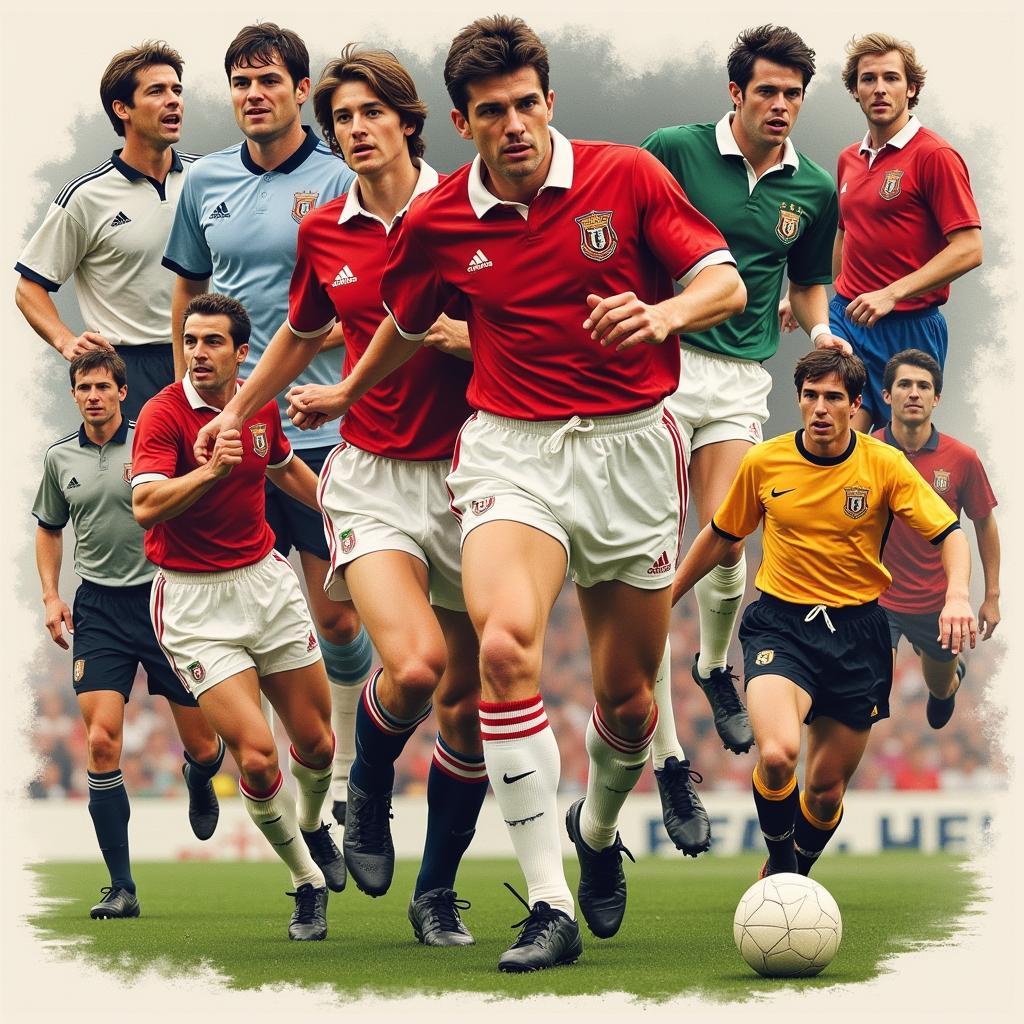The Truth About Bow Legged Soccer Players
October 25, 2024Bow legs, a condition where the knees curve outward even when the feet are together, have become an intriguing talking point in soccer. Some believe it gives players an advantage on the field, while others see it as a mere physical characteristic. So, what’s the real story behind bow legs in soccer?
The Mechanics of Bow Legs and Soccer
Bow legs, medically known as genu varum, can stem from various factors, including genetics, early childhood development, or even certain medical conditions. While it might seem like a disadvantage, some argue that the unique alignment of bow legs can actually benefit soccer players in specific ways:
- Enhanced Ball Striking: The outward curve of the legs can naturally create a wider base of support, potentially leading to a more powerful and accurate strike on the ball. This could be especially advantageous when taking long shots or delivering powerful passes.
- Improved Agility and Balance: Contrary to what some might think, bow legs can contribute to a lower center of gravity. This can translate into quicker changes in direction, sharper turns, and overall enhanced agility on the field.
- Unique Dribbling Style: The altered leg alignment can influence a player’s dribbling technique, potentially making it more challenging for opponents to predict their movements and steal the ball. This unique style can be a valuable asset in one-on-one situations.
Famous Soccer Players with Bow Legs
 Collage of famous soccer players known for having bow legs.
Collage of famous soccer players known for having bow legs.
The world of soccer has witnessed numerous players with bow legs who have achieved legendary status. These players, despite their unique physical characteristics, have consistently demonstrated exceptional skill and athleticism, captivating fans worldwide:
- Garrincha: Widely regarded as one of the most gifted dribblers in history, the Brazilian legend possessed distinct bow legs that were believed to contribute to his mesmerizing style of play.
- Lionel Messi: Even the best player in the world showcases a slight degree of bow-leggedness. This hasn’t hindered his incredible balance, agility, and ball control, which are arguably unmatched in modern soccer.
It’s crucial to emphasize that while these players had bow legs, attributing their success solely to this physical characteristic would be an oversimplification. Their dedication, hard work, and natural talent played equally significant roles in their rise to stardom.
Bow Legs: Advantage or Just a Trait?
The question of whether bow legs offer a definitive advantage in soccer remains a topic of debate. While the unique biomechanics might contribute to certain advantages as mentioned earlier, it’s not a guaranteed recipe for success.
Many exceptional players possess perfectly straight legs, proving that skill, technique, and tactical understanding are paramount in soccer. Conversely, having bow legs doesn’t automatically translate into becoming a soccer prodigy.
Conclusion
The presence of bow legs in soccer offers a fascinating glimpse into how individual physical characteristics can potentially influence a player’s style and strengths. While it might offer subtle advantages in specific areas like ball striking or agility, it’s essential to recognize that it’s just one of many factors contributing to a player’s overall success. Ultimately, dedication, hard work, and a passion for the beautiful game remain the most crucial elements in achieving greatness on the field, regardless of whether you have bow legs or not.
FAQs
1. Can bow legs be corrected in children?
In many cases, bow legs in young children naturally correct themselves as they grow. However, if the condition persists or is severe, medical intervention might be necessary.
2. Do bow legs cause pain for soccer players?
Not necessarily. While some individuals with bow legs might experience discomfort, it’s not a universal experience. Proper conditioning and strengthening exercises can help mitigate any potential issues.
3. Are there any disadvantages to having bow legs in soccer?
While not inherently disadvantageous, bow legs might require specific training adaptations to ensure optimal biomechanics and reduce the risk of injuries.
4. Can bow legs develop later in life?
While less common, bow legs can develop in adulthood due to factors like arthritis, injuries, or vitamin deficiencies.
5. Is there a specific training regime for players with bow legs?
Training regimes should always be personalized. However, players with bow legs might benefit from exercises focusing on strengthening hip abductors, core muscles, and improving ankle mobility.
For any further inquiries or support, please don’t hesitate to contact us at Phone Number: 0396443476, Email: [email protected]. You can also visit us at 23 Tháng 3, Đắk Nia, Gia Nghĩa, Đắk Nông, Việt Nam. Our dedicated customer support team is available 24/7 to assist you.